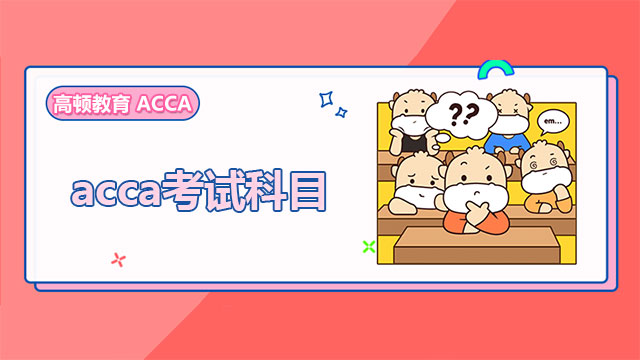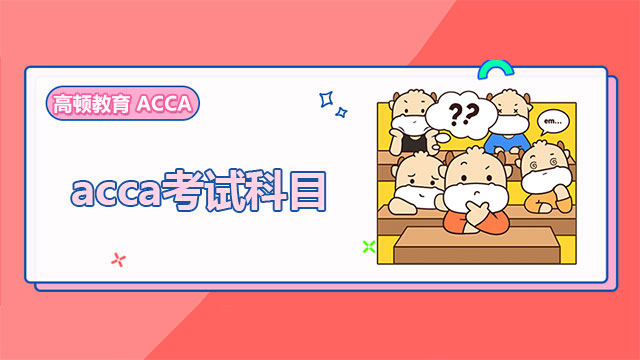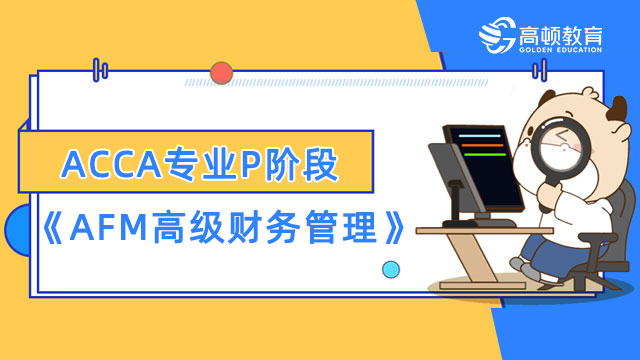ACCA《P7高级审计与认证业务》知识辅导4
来源:
高顿网校
2015-03-12
漫漫考试路,各位考生,您准备好了吗?如何快乐高效的学习?高顿网校为广大学员提供2015年ACCA考试网络课程,请各位考生紧跟网校名师的步伐尽快进入备考复习,让高顿与您共同努力,2015年考试顺利通过!祝您梦想成真!免费听课》
A QUESTION OF ETHICS
When ethics appears in an optional question in the Paper P7 exam, it is often a popular choice for candidates, but their answers often lack detail and are not well applied to the question scenario. This article aims to assist candidates in terms of knowledge and question technique when tackling a question on ethics
Paper P7, Advanced Audit and Assurance often contains question scenarios and requirements dealing with ethical issues, in both the compulsory and optional questions. When ethics appears in an optional question, it seems to be a popular choice for candidates in the exam, but answers are often lacking in detail and not well applied to the question scenario. The purpose of this article is to assist candidates in terms of knowledge and question technique when tackling a question on ethics.
THE IESBA CODE
IESBAˇs (IFACˇs) Code of Ethics for Professional Accountants provides a conceptual framework that requires a professional accountant to identify, evaluate, and address threats to compliance with the fundamental principles. The conceptual framework approach should assist professional accountants to comply with the ethical requirements of the IESBA Code, and to serve the public interest. Guidance is provided in several areas: the identification of threats; the evaluation of the significance of those threats; and the use of safeguards that may serve to reduce threats to an acceptable level. In addition there are circumstances in which safeguards cannot reduce a threat to an acceptable level, and guidance is given on this also. Each of these points is discussed below.
THREATS TO COMPLIANCE WITH THE FUNDAMENTAL PRINCIPLES
The IESBA Code states that threats may be created by a broad range of relationships and circumstances. A circumstance or relationship may create more than one threat, and a threat may affect compliance with more than one fundamental principle.
The threats to compliance are listed and described as follows in the IESBA Code:
Self-interest threat the threat that a financial or other interest will inappropriately influence the professional accountantˇs judgment or behaviour.
Self-review threat the threat that a professional accountant will not appropriately evaluate the results of a previous judgment made or service performed by the professional accountant, or by another individual within the professional accountantˇs firm or employing organisation, on which the accountant will rely when forming a judgment as part of providing a current service.
Advocacy threat the threat that a professional accountant will promote a clientˇs or employerˇs position to the point that the professional accountantˇs objectivity is compromised.
Familiarity threat the threat that due to a long or close relationship with a client or employer, a professional accountant will be too sympathetic to their interests or too accepting of their work.
Intimidation threat the threat that a professional accountant will be deterred from acting objectively because of actual or perceived pressures, including attempts to exercise undue influence over the professional accountant.
Exam technique point when answering exam requirements, candidates often simply state that a situation creates a threat, for example an answer may state ˉthis situation creates a self-interest threatˇ but without further explanation. Candidates must explain why a situation creates a particular threat in order to gain full credit, i.e. the answer must be tailored and specific to the scenario. Some candidates take a scattergun approach to their answer and simply list out all of the threats in the hope that one or more will be relevant to the scenario. Again, this approach is wasteful of time in the exam, as full credit can only be given where the correct threat or threats have been identified and also explained.
THE EVALUATION OF THE SIGNIFICANCE OF THREATS
The IESBA Code requires that a professional accountant shall take qualitative as well as quantitative factors into account when evaluating the significance of a threat. This is a matter of judgment and the matters that form part of the evaluation will depend on the type of threat that exists. Some examples are given below for several types of threat to illustrate the evaluation:
SCENARIO 1
Family and personal relationships A close personal relationship between a member of the audit team and an employee of a client company can create self-interest, intimidation, and familiarity threats to objectivity because the audit team member may not be sufficiently sceptical of, or sympathetic towards the employee with whom they have a relationship. In evaluating the significance of this threat, the seniority of the member of the audit team and of the client employee should be considered, as the threat is more significant for more senior personnel who have more influence over the preparation and audit of the clientˇs financial statements.
Gifts and hospitality A clientˇs offer of gifts or hospitality to a member of the audit team can give rise to a self-interest threat to objectivity because the offer may sway the judgment of the auditor in favour of the client. In evaluating the significance of this type of threat
matters such as the nature and monetary value of the gift or hospitality to both the client and the auditor, and the intention of the offer should be considered. For example, large value gifts will not represent a more significant threat than say a client buying lunch for a member of the audit team during the audit.
Providing non-assurance services to audit clients The audit firm providing non-audit services to audit clients may create a self-review threat because the service provided may affect transactions recorded in the financial statements, on which the auditor must then express an opinion. In addition, a self-interest threat may arise due to the income generated from providing the non-assurance service, and advocacy threats may arise depending on the type of service provided. Evaluating the significance of the threats created could include, but are not limited to, considering the materiality of any balances, transactions or disclosures impacted by the service provided, the level of fee that is charged for providing the service, and the level of management involvement and level of management expertise in relation to the subject matter of the service.
Exam technique point evaluating the level of significance of an identified threat or threats is a higher level skill that candidates should try to display. This could be through a proper explanation and conclusion as to whether an identified threat or threats are significant, or by prioritising the threats that have been identified.
THE USE OF SAFEGUARDS
Safeguards are necessary when the auditor concludes that the identified threats are at a level at which compliance with the fundamental principles is compromised. In other words, safeguards should be applied, when necessary, to eliminate the threats or reduce them to an acceptable level. Safeguards fall into two broad categories:
Safeguards created by the profession, legislation or regulation this may include for example, the requirements of professional standards, corporate governance regulations and education and training of auditors.
Safeguards in the work environment the IESBA Code gives examples of two types of safeguards in the work environment those that are firm-wide, and those that are engagement-specific. Examples of firm-wide safeguards include, but are not limited to:
Policies and procedures to implement and monitor quality control of engagements.
Policies and procedures that will enable the identification of interests or relationships between the firm or members of engagement teams and clients.
Policies and procedures to monitor and, if necessary, manage the reliance on revenue received from a single client.
Using different partners and engagement teams with separate reporting lines for the provision of non-assurance services to an assurance client.
Policies and procedures to prohibit individuals who are not members of an engagement team from inappropriately influencing the outcome of the engagement.
Advising partners and professional staff of assurance clients and related entities from which independence is required.
A disciplinary mechanism to promote compliance with policies and procedures.
Examples of engagement-specific safeguards include, but are not limited to:
Having a professional accountant who was not a member of the assurance team review the assurance work performed or otherwise advise as necessary.
Consulting an independent third party, such as a committee of independent directors, a professional regulatory body or another professional accountant.
Discussing ethical issues with those charged with governance of the client.
Disclosing to those charged with governance of the client the nature of services provided and extent of fees charged.
Rotating senior assurance team personnel.
The auditor may also be able to rely to an extent on safeguards implemented by the client, if they are relevant to the threat or threats identified. However the IESBA Code states that it is not possible to rely solely on such safeguards to reduce threats to an acceptable level.
Examples of safeguards within the clientˇs systems and procedures include:
The client requires persons other than management to ratify or approve the appointment of a firm to perform an engagement.
The client has competent employees with experience and seniority to make managerial decisions.
The client has implemented internal procedures that ensure objective choices in commissioning non-assurance engagements.
The client has a corporate governance structure that provides appropriate oversight and communications regarding the firmˇs services.
Exam technique points Requirements often ask candidates to recommend actions to be taken by the audit firm, or to comment on ethical matters raised in a scenario, both of which indicate that appropriate safeguards should be described in the answer. First, it is important that safeguards described in answering requirements are specific to the threat or threats identified. Second, different types of safeguards may be described, including those created by the profession, legislation or regulation if relevant, such as the prohibition of an action such as the provision of certain types of non-assurance service, as well as firm-wide and engagement specific safeguards. More than one safeguard may be relevant to an identified threat, and so it may be appropriate to discuss or recommend a range of safeguards. SITUATIONS WHERE THREATS CANNOT BE ELIMINATED OR REDUCED TO AN ACCEPTABLE LEVEL
An auditor may encounter a situation in which threats cannot be eliminated or reduced to an acceptable level, either because the threat is too significant or because appropriate safeguards are not available or cannot be applied. In such situations, the IESBA Code requires the auditor to decline or discontinue the specific professional service involved or, when necessary, resign from the audit engagement.
Exam technique point it is a matter of professional judgment to decide if an audit engagement or other professional service should be declined or discontinued due to the severity of threats and/or lack of appropriate safeguards. If relevant in a scenario candidates should carefully explain why the threats are so severe, or why appropriate safeguards cannot be employed, remembering that withdrawing from an audit engagement is a last resort and will need to be appropriately justified.
MATTERS SPECIFIC TO CANDIDATES ATTEMPTING THE UK, IRL AND SGP ADAPTED PAPERS
The Financial Reporting Council issues Ethical Standards for Auditors, which are examinable documents for candidates attempting the UK and IRL adapted papers. The Ethical Standards contain broadly similar guidance to the IESBA Code, and promote the use of a conceptual framework based on the same principles as the IESBA Code for the identification and evaluation of threats, and the use of appropriate safeguards. Candidates are expected to understand of the main provisions of the Ethical Standards as they form an important part of the regulatory framework for auditors in the UK and Ireland.
Similarly, candidates attempting the SGP adapted paper are expected to be aware of the principles and requirements of The Institute of Certified Public Accountants of Singapore (ICPAS) Code of Professional Conduct and Ethics which is an examinable document.
CONCLUSION
Questions containing requirements on ethics are a common feature of Paper P7, and candidates should follow the technical content and exam technique points provided in this article to enhance their understanding of this area of the syllabus. In particular, answers should emulate the conceptual framework approach to ethics by identifying and explaining the types of threat present in a scenario, evaluating the level of significance of the threat, and identifying appropriate safeguards. In cases where
threats cannot be mitigated by the use of safeguards and an engagement be declined or withdrawn from, the rationale for this should be clearly explained.
Written by a member of the Paper P7 examining team
小编寄语:只要功夫深,铁杵磨成针,考试也是这样,只要够努力,功到自然成。
| ACCA网络课程 | 课程专业名称 | 讲师 | 试听 |
 85%的人正在学习该课程 85%的人正在学习该课程 | ACCA 全维度网课体验课程 实景课堂与独立录制 覆盖所有知识点,根据学习计划推进学习进度 | 高顿名师 |  |
 70%的人正在学习该课程 70%的人正在学习该课程 | ACCA网课全科卡(8.2折) 为零基础刚开始学习ACCA的学员特别定制 | 高顿名师 |  |
精彩推荐:
版权声明:本条内容自发布之日起,有效期为一个月。凡本网站注明“来源高顿教育”或“来源高顿网校”或“来源高顿”的所有作品,均为本网站合法拥有版权的作品,未经本网站授权,任何媒体、网站、个人不得转载、链接、转帖或以其他方式使用。
经本网站合法授权的,应在授权范围内使用,且使用时必须注明“来源高顿教育”或“来源高顿网校”或“来源高顿”,并不得对作品中出现的“高顿”字样进行删减、替换等。违反上述声明者,本网站将依法追究其法律责任。
本网站的部分资料转载自互联网,均尽力标明作者和出处。本网站转载的目的在于传递更多信息,并不意味着赞同其观点或证实其描述,本网站不对其真实性负责。
如您认为本网站刊载作品涉及版权等问题,请与本网站联系(邮箱fawu@gaodun.com,电话:021-31587497),本网站核实确认后会尽快予以处理。
点一下领资料
【整理版】ACCA各科目历年真题
真题高频考点,刷题全靠这份资料
下载合集
acca全科学习思维导图
梳理核心考点,一图看懂全部章节
下载合集
2023年acca考纲解析
覆盖科目重难点,备考按照计划走
下载合集
acca备考 热门问题解答
- acca考试怎么搭配科目?
-
建议优先选择相关联的科目进行搭配报考,这样可以提高备考效率,减轻备考压力,1、F1-F4:为随时机考科目,难度较低,这里可以自行随意选择考试顺序。2、F5-F9:如果你的工作的和财务会计或者审计有关、或者你比较擅长财务和审计的话,推荐先考F7和F8。你可以选择一起考ACCA考试科目F7和F8或者先考F7(8)再考F8(7),这就要取决你一次想考几门。3、P阶段:选修科目中,建议企业首选AFM!第二部分科目进行选择,如果AA和SBR掌握学生更好,可以通过选择AAA,如果SBL掌握的好,可以自己选择APM。
- acca一共几门几年考完?
-
acca一共有15门考试科目,其中有必修科目和选修科目,考生需要考完13门科目才能拿下证书。
- acca一年考几次?
-
acca一年有4次考试,分别是3月、6月、9月和12月,分季机考科目是采取的这类四个考季的模式,而随时机考则是没有这方面的时间规定限制,可以随报随考。
- acca的含金量如何?
-
ACCA证书的含金量是比较高的,从就业、能力提升、全球认可等角度来说,都是比较有优势的证书,其含金量主要表现在以下几个方面:1、国际化,认可度高;2、岗位多,就业前景好;3、缺口大,人才激励。
严选名师 全流程服务
其他人还搜了
热门推荐
-
acca专业阶段考试科目有哪些?究竟都考些什么? 2023-04-23
-
accaP阶段科目考完需要多久?速戳了解! 2023-03-28
-
ACCA高级课程是哪几门?和基础课程比难度怎么样? 2023-03-17
-
sbr和sbl哪个难?accaP阶段先考哪个? 2023-03-16
-
accaP阶段报名费是多少?一文介绍全了! 2023-03-14
-
accaP阶段有哪些科目?各科目详细介绍! 2023-03-14
-
accap阶段考试顺序是怎样的?选修科目怎么选? 2023-03-10
-
acca考试科目:《ATX高级税务》重点详解! 2023-03-06
-
acca考试科目:《APM高级业绩管理》重点详解! 2023-03-06
-
acca考试科目:《AFM高级财务管理》重点详解! 2023-03-06
-
accap阶段有效期是多久?需要几年内考完? 2023-03-01
-
accaP阶段选修选哪两门?各科难度对比来了! 2023-02-28
-
2023年acca的sbl怎么学?点击查收备考攻略! 2023-02-24
-
acca考试p阶段科目题型,附各科分值参考! 2023-02-23
-
accap阶段要考几门?重难点是什么? 2023-02-10
-
accap阶段要考几门?重难点是什么? 2023-02-10
-
accaP阶段科目怎么搭配?先考哪门? 2023-02-09
-
ACCA专业P阶段:《AFM高级财务管理》复习攻略 2023-01-30
-
accap阶段选哪两门?考试重难点介绍! 2023-01-17
-
acca考试科目:《AAA高级审计与鉴证》题型及重点! 2023-01-17
-
acca专业阶段考试难度分析,选修科目报考指南来了! 2023-01-12
-
accap阶段报考顺序推荐,先报哪个好? 2022-12-15
-
ACCAp阶段一次最多考几门?成绩有效期是多久? 2022-08-24
-
ACCA的p阶段需要备考多久才够?考试难度怎么样? 2022-08-18
-
ACCAp阶段考试需要考几门?考试时间是哪天? 2022-08-15
-
ACCA考试P阶段考几门?P阶段成绩有效期是多久? 2022-08-12
-
ACCAP阶段科目难度高吗?P阶段是机考吗? 2022-08-10
-
ACCA最后四门难考吗?通过率怎么样? 2022-07-19
-
ACCA英语不好怎么办?怎么提高英语? 2022-07-14
-
ACCA机考报名时间是什么时候?怎么报考? 2022-07-14
 更多服务
更多服务









































